CONSA-BMS Training Report
Theme: Newborn Screening Saves Lives! Ensuring Quality in Newborn Screening
Venue: Auditorium, Laboratory Complex , Faculty of Basic Clinical Sciences, Behind UATH, Gwagwalada
Date: 6th September 2024
Time: 8:00 AM – 2:00 PM
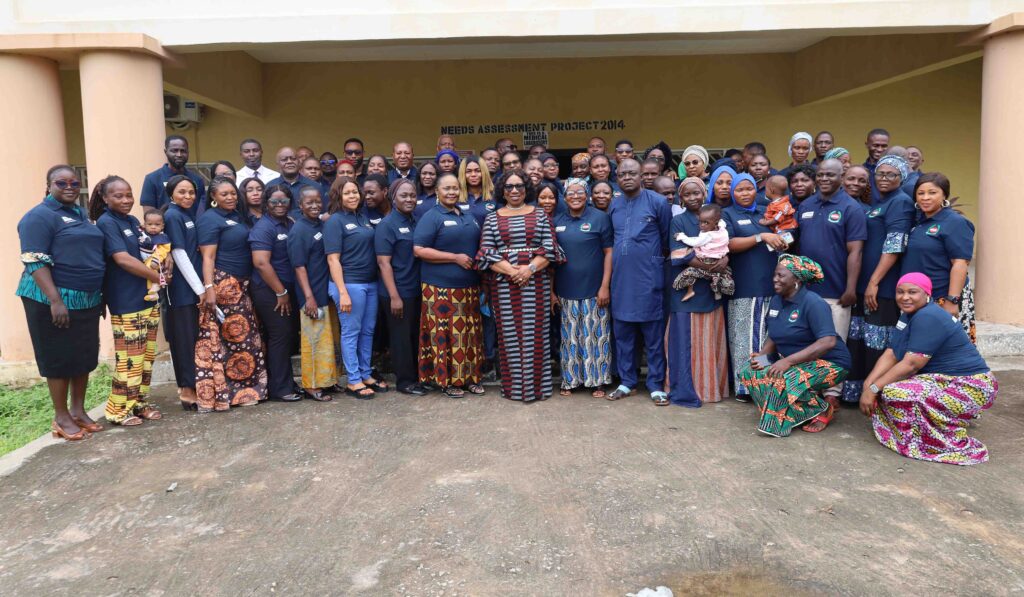
The CESRTA team, under the umbrella of the Consortium on Newborn Screening in Africa (CONSA), successfully conducted a training workshop supported by the Bristol Myers Squibb (BMS) grant. The workshop aimed to enhance the skills and knowledge of healthcare workers in newborn screening for Sickle Cell Disease (SCD), with a focus on improving their ability to follow up and monitor babies identified through the screening program. Participants were trained on screening techniques, patient management, and effective follow-up processes to ensure better care outcomes.
Workshop Sessions
The workshop had the following key sessions:
Session 1
Speaker One: Professor Obiageli E. Nnodu
Director of CESRTA and Principal Investigator of CONSA
Prof. Nnodu opened the session with welcoming remarks, providing an overview of the workshop objectives and expressing gratitude to everyone for taking time out of their busy schedules to attend. She then gave a brief history of the CONSA project, which was launched in October 2020, and explained its primary goal: to demonstrate the effectiveness of laboratory-based newborn screening and early intervention services for Sickle Cell Disease (SCD) across seven African countries.
She outlined key CONSA activities, including:
- Capturing, screening, and collecting clinical data in a consortium registry for future research.
- Educating healthcare providers, families, and communities about SCD diagnosis and care.
- Collaborating with national and international partners to ensure sustainability.
Prof. Nnodu emphasized that CONSA is a demonstration project led by the American Society of Hematology, with both American and African hematologists working together. She also highlighted that the Nigerian hematologists participating in the project are volunteers, with two CONSA sites in Nigeria—FCT and Kaduna. The FCT site screens 6,000 babies annually, while Kaduna screens 10,000.
She introduced the Newborn Screening Ecosystem, which includes:
- Healthcare Provider Education
- Family and Community Engagement
- Governance, Policy, and Finance
- Laboratory Capacity
- Supply Chain Management
- Healthcare Access
- Data Collection and Use
- Leadership of SCD Warriors
Prof. Nnodu provided data from the CONSA screening program in FCT, which has 25 screening sites across four local government areas:
- Total number of unique samples: 23,026
- Total number of Sickle Cell Trait (SCT) cases: 5,492
She discussed challenges faced in clinical care, such as poor follow-up with babies, health literacy issues, denial, stigmatization, and failed phone contacts. To address these challenges, she stressed the importance of community engagement and home visits to ensure that every baby returns to care. The CONSA program offers free oral penicillin, folic acid, pneumococcal vaccines, and mosquito-treated nets for babies enrolled in care.
Prof. Nnodu also spoke about Health Education Initiatives and the BMS Plan, emphasizing key programmatic efforts, including:
- Building laboratory capacity
- Data management and analysis
- Health education
- Ensuring sustainability through various initiatives such as FHIS and the Golden Babies Clinic Form, which aims to improve follow-up care for babies.
She encouraged the team to explore why mothers who bring their babies for care continue to do so, as understanding this could help address the issue of loss to follow-up. She concluded by acknowledging the CONSA team, asking them to stand for recognition.
Speaker Two
Nurse Ibrahim Rukayat
Nurse Rukayat focused on the Follow-Up Process and its importance. She explained that follow-up refers to the ongoing monitoring and management of a patient’s health, which involves regular clinic visits. She presented data showing follow-up rates and the proportion of babies lost to follow-up, including a pie chart on deceased and unenrolled babies.
She highlighted the importance of follow-up, emphasizing that it:
- Optimizes growth and development
- Enhances quality of life
- Educates families
- Facilitates early intervention and long-term outcomes
- Prevents complications and reduces mortality
Follow-Up Schedule:
- First Clinic Visit: Conducted within the first three months of the baby’s life. This visit includes confirmatory testing, health education, counseling, psychosocial support for the family, and clinical interventions such as routine medication, immunization, and mosquito nets.
- Second Clinic Visit: Conducted six months after birth (three months after the first visit). During this visit, confirmatory test results are shared with the parents, further education is provided, and a case report form is completed.
- Routine Clinic Visits: Conducted every three months until the baby turns two. For ages two to five, visits are scheduled every six months. Annual tests are conducted, all free of charge.
Nurse Rukayat also discussed the challenges encountered during the follow-up process and proposed interventions:
- Challenges: Denial, refusal, incorrect phone numbers, relocation, and a lack of dedicated follow-up staff.
- Interventions: Detailed health talks, proper record-keeping using the CommCare app, appointing a dedicated staff member for follow-up, and team-based home visits to build a strong nurse-patient relationship.
At the end of the session, she posed a teaser question:
When should the second clinic visit be conducted for babies that had their first clinic visit in August?
The correct answer was November, and the participant who answered correctly received a gift.
Questions and Answers
Are the patients coming on their own to run the test at UATH or it’s Funded?
Answer; We pay for their transportation and the test is free of Charge.
If a patient relocates how will the follow up be done for the patient?
Answer; Once a patient is enrolled into the registry and the patient relocates to another location, the site closest to where the patient is will be notified and follow up can be done in that site and the patient can access care at the new site.
The drugs given to this patients, is it a cure?
Answer; There are new treatments coming up and there are also promising. That’s why there is the need for the patients to be enrolled.
Session 2
Dr. Hezekiah Isa’s Presentation on the Management of Sickle Cell Disease at the Primary Health Care Level
Dr. Isa delivered an insightful presentation on managing Sickle Cell Disease (SCD) at the primary healthcare level. He emphasized the importance of Health Maintenance Measures, covering the following key points:
- Organizing Clinical Care: All SCD patients should be enrolled at the nearest SCD clinic, attend regularly, and maintain follow-up appointments.
- Education and Psychosocial Support: Providing information and emotional support to patients and families is crucial.
- Travel Management: Guidance on safe travel practices for SCD patients.
- Infection Control: Implementing general infection control measures.
- Immunization: Ensuring vaccination for infection prevention.
- Reproductive Health: Addressing reproductive health concerns in SCD patients.
He also provided an extensive discussion on Acute SCD Pain (Vaso-occlusive Pain Episodes or “Pain Crisis”), explaining the symptoms, causes, and management at primary healthcare centers (PHCs). Dr. Isa introduced the Universal Pain Assessment Tool and outlined the steps for managing vaso-occlusive crises (VOC) when they occur.
Dr. Isa further discussed the management of other SCD-related complications, including:
- Acute Anemia
- Stroke
- Acute Chest Syndrome
- Priapism
- Chronic Leg Ulcers
- Avascular Necrosis
- Chronic Pain
- Ophthalmologic Complications
- Psychological Complications
- Hydration Guidelines
He concluded by stressing the importance of building a Network of Care that integrates community, primary, secondary, and tertiary healthcare, while maintaining clear communication between all levels of care.
Prof. Maxwell Nwegbu’s Lecture on SCD Screening Methods: IEF & Point of Care Testing
Prof. Nwegbu provided a comprehensive lecture on Sickle Cell Disease Screening Methods, focusing on Isoelectric Focusing (IEF) and Point of Care Testing. He explained that SCD diagnosis is conducted at three stages:
- Prenatal
- Newborn
- Post-newborn
Prof. Nwegbu explained the types of samples used for testing, such as chorionic villi, amniotic fluid, and blood, and presented various genotype testing methods, including:
- Sickling and Solubility Test
- LFIA/LFA
- Electrophoresis
- IEF
- HPLC
- Gene-based/Genetic Testing
He also outlined common challenges with many of these methods, such as:
- The need for centralized laboratory analysis
- Requirements for skilled manpower and infrastructure
- High costs
- Long turnaround times (TAT)
Mr. Chinedu Okeke’s Lecture on Best Practices for Collecting and Storing Samples
Mr. Okeke delivered a detailed lecture on Best Practices for Sample Collection and Storage to ensure accurate testing and diagnosis. He began by emphasizing the importance of safety and maintaining a clean working environment during sample collection.
He provided an overview of the materials required for sample collection and highlighted the best practices for labeling and filling out intake forms and DBS (Dried Blood Spot) cards.
Mr. Okeke then conducted an in-depth training on the standard method for collecting blood samples, including how to properly prick the foot, prevent infections post-sample collection, and handle samples safely. He also discussed the best practices for DBS drying, packaging, and storage to avoid contamination, and compared poorly collected DBS samples with well-collected ones to underscore the importance of accuracy.
Session 3
Interactive Session on Newborn Screening Strategies
Session Overview
Focus: Strategies to track missing babies, enhance follow-up efforts, and ensure no child is left out of care.
Panelists:
- Dr. Isa Hezekiah
- Nurse Ibrahim Rukayat
- Mr. Reuben Chianumba
- Prof. Obiageli Nnodu
- Mrs. Victoria N. (In-charge, DUTM)
Key Discussions and Recommendations
Who should perform the newborn screening test/blood sample collection?
- Prof. Nnodu: Emphasized that various trained healthcare professionals, not just lab scientists, can perform the screening, depending on the facility’s workflow and staff availability during immunization.
- Recommendation: Implement step-down training so that staff can learn to conduct screening tests and work collaboratively as a team.
How to find and track missing babies?
- Giri In-charge: Suggested involving primary healthcare centers, village meetings, and community leaders to educate parents about the importance of newborn screening and ensure follow-up on results.
Ensuring mothers receive health talks on newborn screening
- It was recommended that the in-charge of the facility take personal responsibility for conducting regular health talks, starting from the antenatal period.
- Responsibilities should be delegated, and workshop attendance opportunities should be shared with staff to avoid information hoarding.
- Facilities like GTC and Mpape PHC are now committed to implementing newborn screening programs after gaining knowledge from the workshop.
Maintaining contact information for follow-up
- Mr. Reuben (CONSA Data Manager): Highlighted the importance of maintaining accurate phone numbers for babies as part of the immunization and follow-up tracking system.
- Nurse Ibrahim (CONSA Research Nurse): Advised PHC heads to assign dedicated staff members to handle follow-up activities.
Summary of Discussions
The interactive session emphasized a collaborative, multidisciplinary approach to newborn screening. It was agreed that the process should involve a range of healthcare professionals, community engagement, and dedicated follow-up efforts to ensure that no child is left behind in the care process.
Closing Remarks and Feedback
Speaker: Prof. Obiageli Nnodu
Prof. Nnodu concluded the workshop by summarizing the key points and takeaways from the sessions. A Q&A session followed, allowing participants to clarify any remaining questions.
Pretest and Post-test Survey Results
Pretest Summary:
- The pretest assessed participants’ initial knowledge of newborn screening, patient management, and follow-up processes. The average score was 45%, indicating moderate understanding with significant room for improvement.
Post-test Summary:
- The posttest measured knowledge gained from the workshop. The average score improved to 80%, showing a substantial increase in understanding of screening methods, referral processes, and patient management.
Participant Feedback
Participants found the training highly informative and practical. They particularly appreciated the interactive sessions, especially the panel discussion on tracking missing babies. Suggestions for future workshops included:
- More hands-on demonstrations of screening techniques.
- Longer interactive sessions for deeper engagement.
- Provision of additional resources, such as detailed guidelines and materials for patient counselling.
Conclusion
The CONSA BMS Training Workshop successfully achieved its objectives of enhancing participants’ knowledge and practical skills in newborn screening for Sickle Cell Disease (SCD). The significant improvement in post-test results highlights the effectiveness of the workshop. Feedback from participants will be used to further improve future training programs. A total of 90 participants, including CESRTA team members and facilitators, attended the workshop.

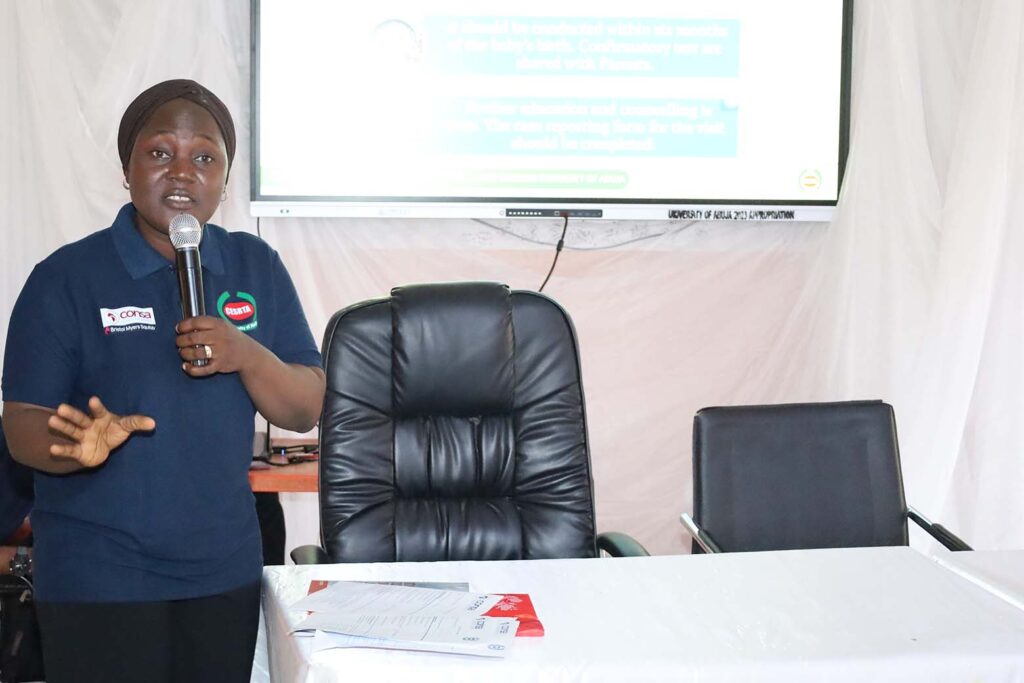
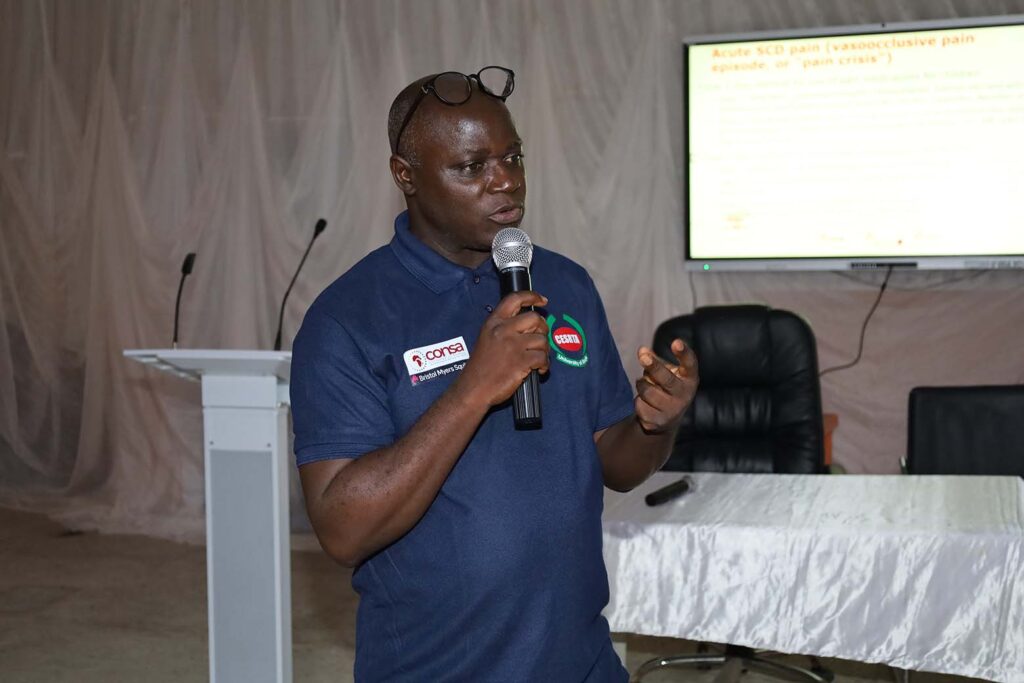

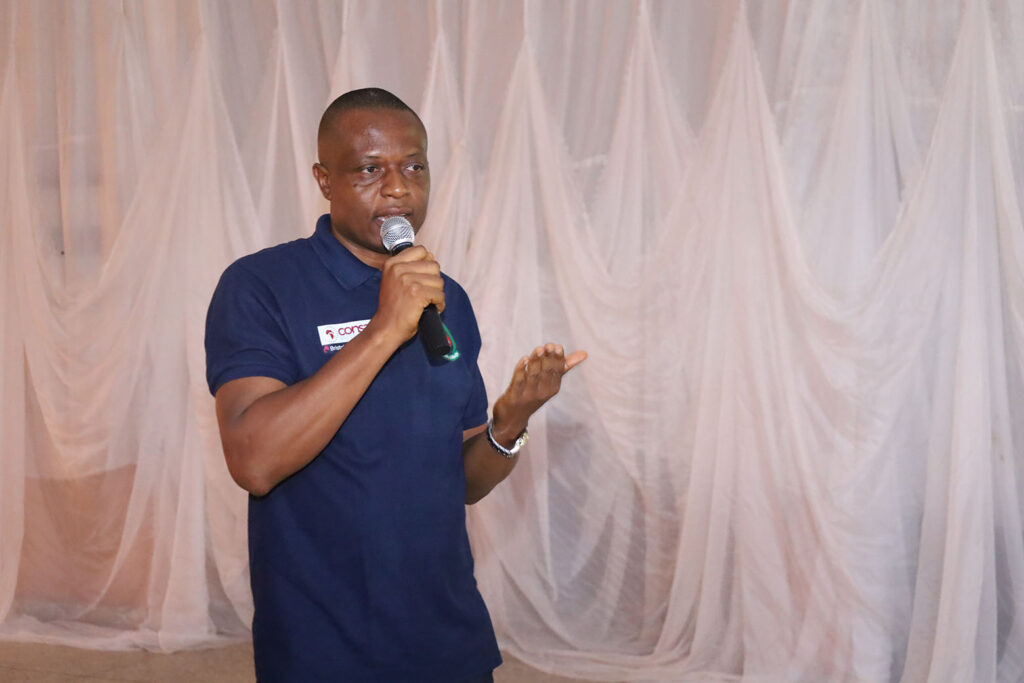
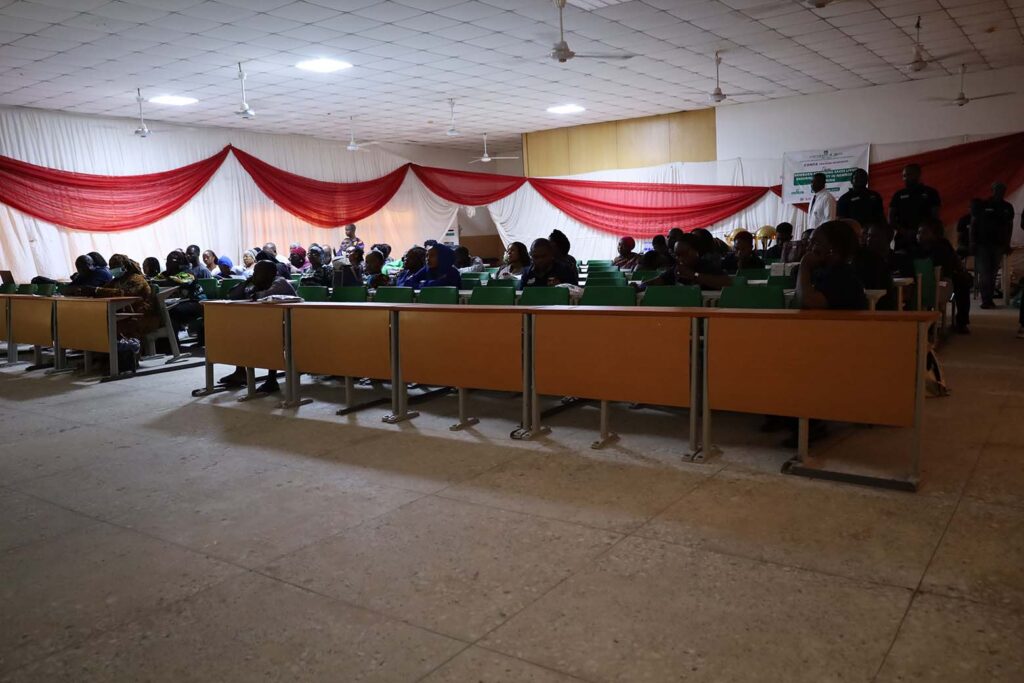
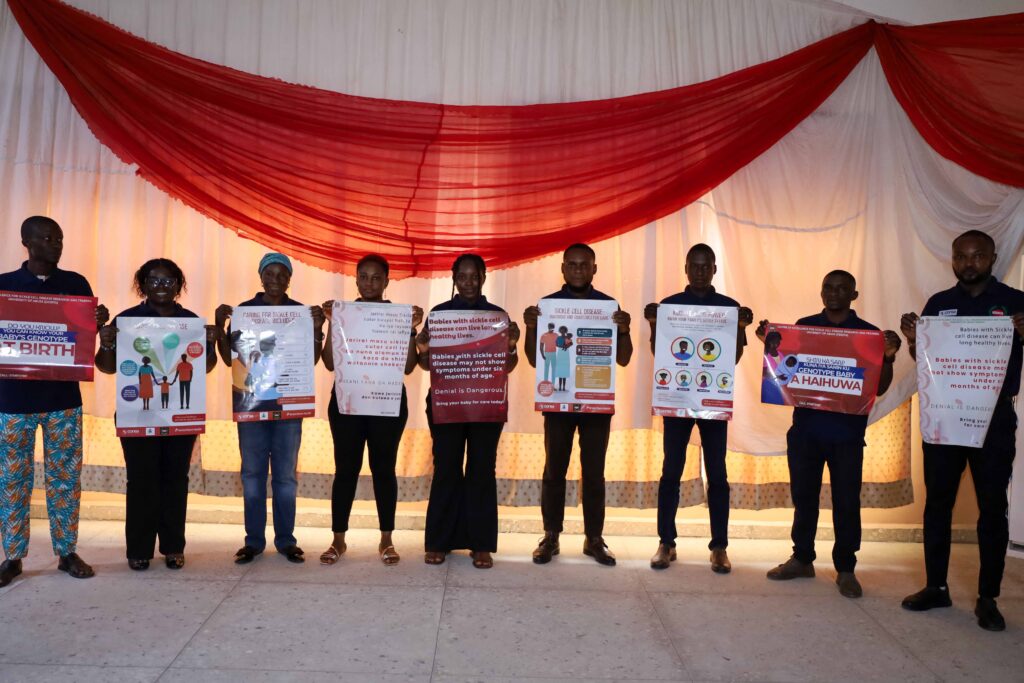
About us
Research
Twitter Feeds
Copyright © 2024 CESRTA. All rights reserved.

